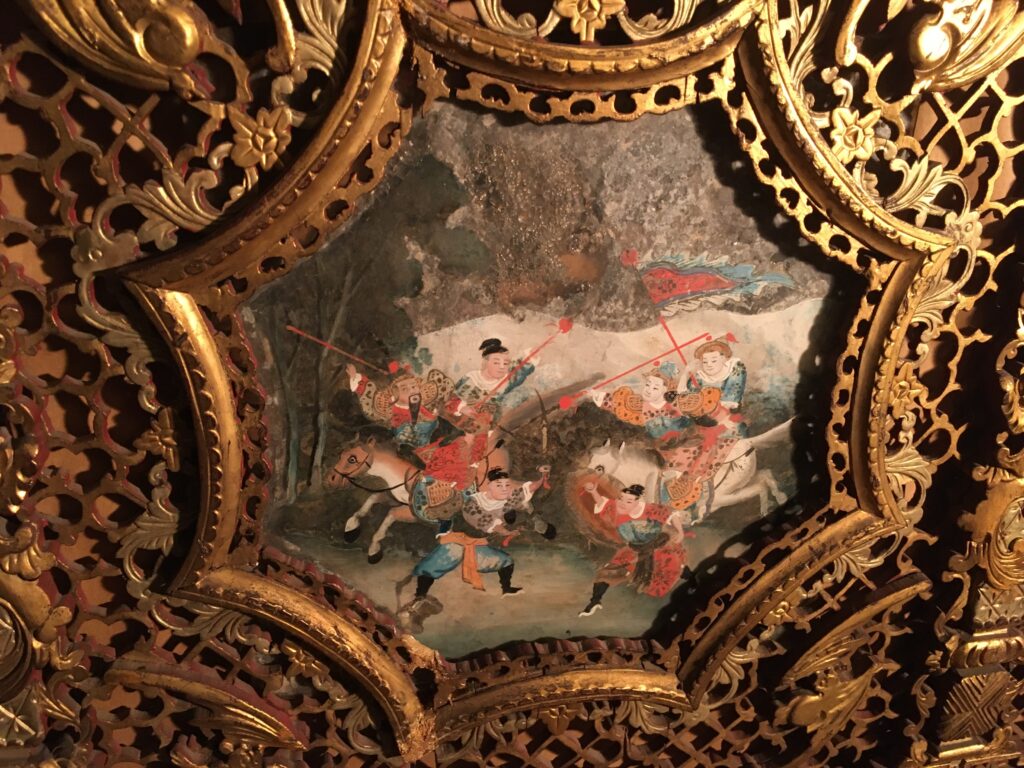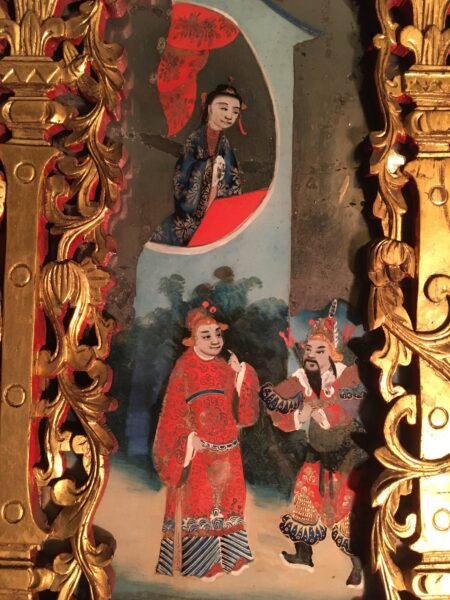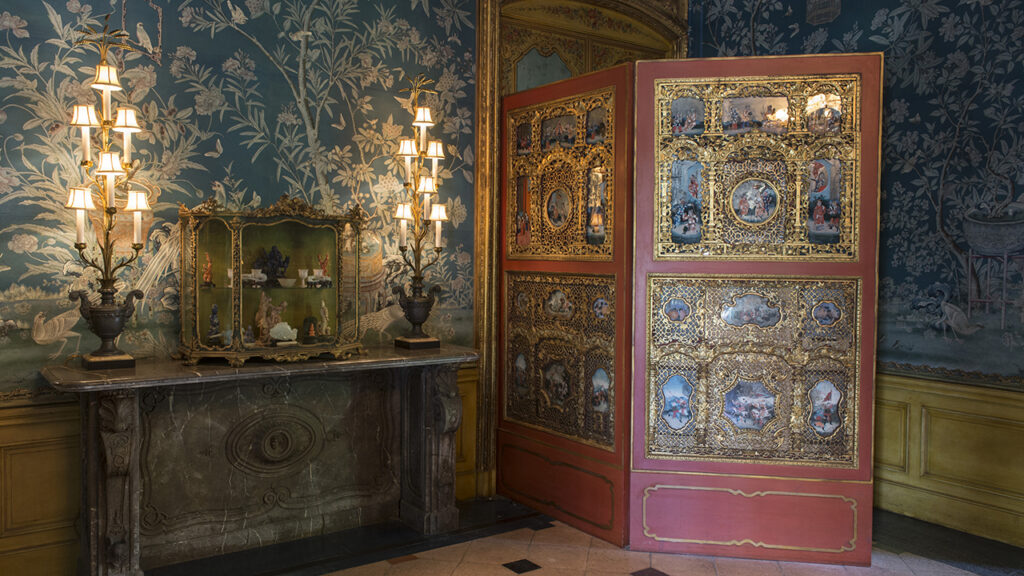Recently, one of our collection objects caused a bit of excitement both inside and outside of the Rosen House at Caramoor!
The Chinese screen in the Formal Dining Room is comprised of sections of carved and gilded wooden fretwork and panels of reverse-painted glass. Two scholars with expertise in Chinese export artwork generously assisted the Caramoor team in identifying where the sections may have been made and the scenes depicted in the paintings. The glass panels were painted by artists who worked on the back side of the glass, building up layers of pigment and detail before adding either a black backing or one of mercury to create a mirrored background (as in our panels) for the image. The clear front surface protected these so-called “glass paintings.”

The artists’ names have been lost to time, but the center of their production was in Canton, China, in the 18th and 19th centuries. In order to feed the market hunger for this type of Chinese art in Thailand, France, Sweden, England, and America, Canton workshops turned to certain popular subjects again and again. The Rosen House screen includes images of the Eight Immortals and scenes from [Romance of the Three Kingdoms], an epic novel that incorporates several hundred fictional and historical figures and recounts the intrigues and battles among three warring factions of the Han dynasty over the course of a century.
The scenes from the beloved novel include a fight on horseback waged by Zhang Fei and a showdown over Diochan, one of the few female characters in the novel. Each illustration is a story in itself and the research will be ongoing here.

Special thanks to Dr. William Ma and to Thierry Audric for their enthusiastic help in identifying the subjects, and for sharing their knowledge of how Chinese glass painting functioned in the global trade network.

Leave a Reply